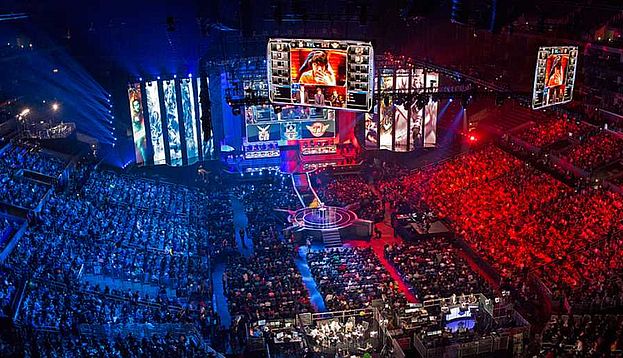Since 2006, Eventbrite has processed over 200 million tickets and registrations worldwide, totaling more than $3 billion in gross ticket sales. The company has watched as eSports live events sell out sports arenas and soccer stadiums around the globe. They reached out to 1,500 gamers who have attended eSports live events around the globe ticketed on Eventbrite from 2013-2014 and used that data for a new report, “The eSports Effect: Gamers and the Influence of Live Events.” Christine Bohle, head of consumer partnerships at Eventbrite, breaks down the new report and explains why gamers are flocking to live eSports events in this exclusive interview.
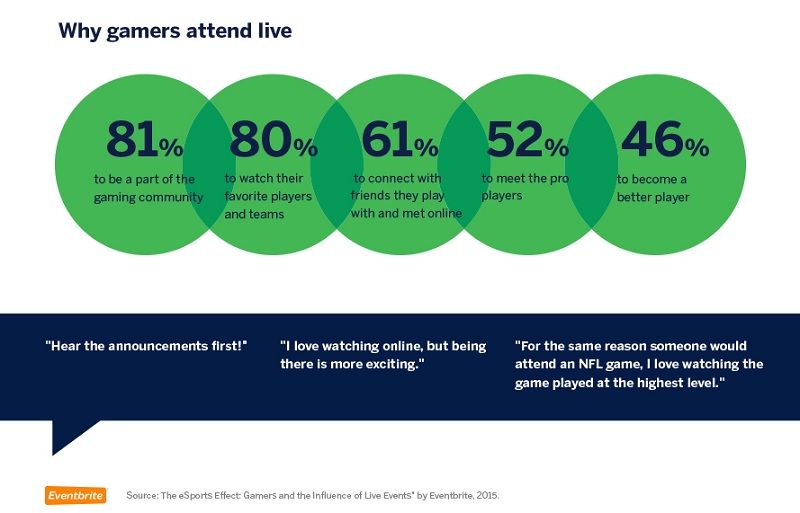
What are some comparisons to traditional sports that you’ve found with eSports fans through this survey
Regardless of the sport, people enjoy watching players they admire. The things that attract fans to eSports are the same things that attract fans to traditional sports — the excitement, seeing the best of the best in action, and feeling that sense of community and passion. This came through in our findings; 54 percent of eSports fans we surveyed said they also watch traditional sports and 15 percent of those watch traditional sports 10 or more hours a week. One survey respondent even said, “For the same reason someone would attend an NFL game, I love watching the game played at the highest level.”
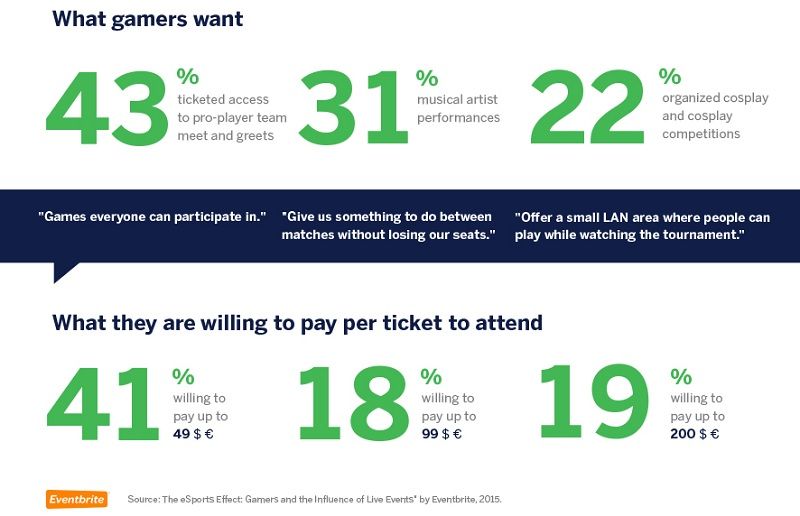
How is livestreaming impacting people going to events live (when it’s in their country)?
Gamers enjoy participating in the live event atmosphere and 66 percent say that attending an eSports event in person gives them another way to experience games that they are looking for, with many commenting that the big sights, sounds, screens, and stage are all compelling reasons to see it live. What that says is that livestreaming simply can’t replace the unique community experience and excitement of being at an event in-person and in fact fuels even more demand for more events in the future. Gamers who otherwise can’t attend have the opportunity to track what’s happening in real-time and get a taste for what it’s like to be at the actual event. As result, their enthusiasm grows and when they see incredible plays being made by the teams participating and the audience reaction, it makes them want to be part of the action even more. One survey respondent said, “I love watching online, but being there is more exciting.” Another commented, “It’s my ‘Vegas.'”
 Christine Bohle
Christine Bohle
What did you learn about eSports fans when it comes to spending money at or around eSports events?
We found that attending these events live inspires people to purchase more game-related content and gear both at and following the tournament or competition. The study showed that after attending an eSports event 47 percent of attendees purchase new content related to a game; 38 percent buy products or services from a brand used or showcased at the event; 25 percent also said they buy new gear they saw at the event or being used by one of the players to “up” their playing experience.
What are the opportunities for brands and sponsors already involved in eSports?
Fans attend eSports events seeking access to exclusive “you had to be there” experiences and a new level of engagement with their favorite games and players. Anything brands and sponsors can do to offer fans an exclusive experience — special merchandise, access to pros, training sessions, interactive activities, additional competitions, cosplay — will provide attendees with a more memorable, lasting impression with their products and services.
What would you say to brands and companies not active in eSports yet?
ESports provide a unique opportunity for brands and companies to engage with gamers and get more immersed in the community — especially at live events. That can be incredibly compelling and our research certainly points to the fact that this audience pays attention to the companies that get involved. The key is to find ways to integrate in an authentic way and that overall further enhances the fan experience.
Also related is the question around game developers and publishers who have yet to jump into eSports and host their own events. Understandably, there are concerns about the cost of producing an event and whether they will see the ROI. What our data suggests is there are ways to defray costs by bringing in sponsors, and that that investment can pay off for those partnering brands and companies. The report also revealed that 74 percent of gamers who attend an eSports event play the game more frequently afterward, and that one of the reasons why (30 percent selected) is because gamers bought new content related to that game. Now that’s powerful. Ultimately what it comes down to is that eSports events can offer developers and publishers not yet involved a great way to increase fan engagement, build camaraderie around their games and drive up purchasing behavior.
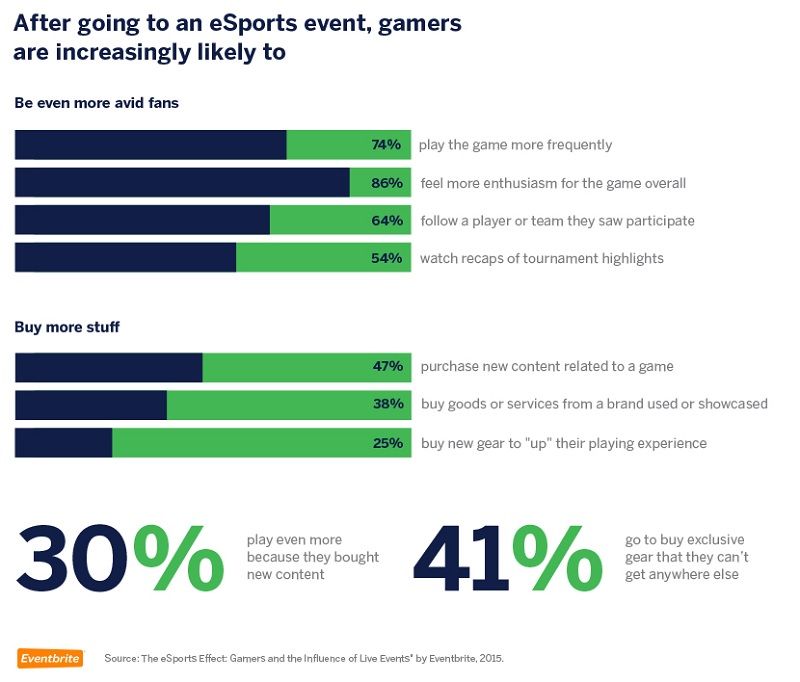
Given that this survey was done before soccer stadiums became the new norm, what impact do you feel these larger venues will play in attracting eSports fans?
This study was done in January 2015. We’ve seen large venues like soccer stadiums fill with eSports fans, but our study also uncovered the desire for more small, local events and LAN parties (local gamer meetups and competitions). In fact, 54 percent of people who attend eSports competitions also attend LAN parties and 40 percent of respondents said they would like to see more live events offered outside major cities. So, while eSports events with giant screens, professional gamers, and cameos by celebrities continues to grow, there is still a great demand for smaller, local events as well.
What opportunities are there for US cities that have yet to host an eSports event?
It was clear from our study that people want more events, more often, and are willing to travel to attend them. Nearly half of eSports attendees (48 percent) are willing to travel to another state or province and opportunity exists for smaller cities as well; 40 percent of respondents said they’d like to see more live events outside major cities. With comic and anime conventions, also popular among eSports fans, we often see new events cropping up within a hundred miles or in adjacent cities to major con event locations, and are seeing tremendous success. Since people are willing to travel, and there is a demand for more events overall, we believe there is tons of room for smaller cities and towns to host an eSports competition locally and get a good following.
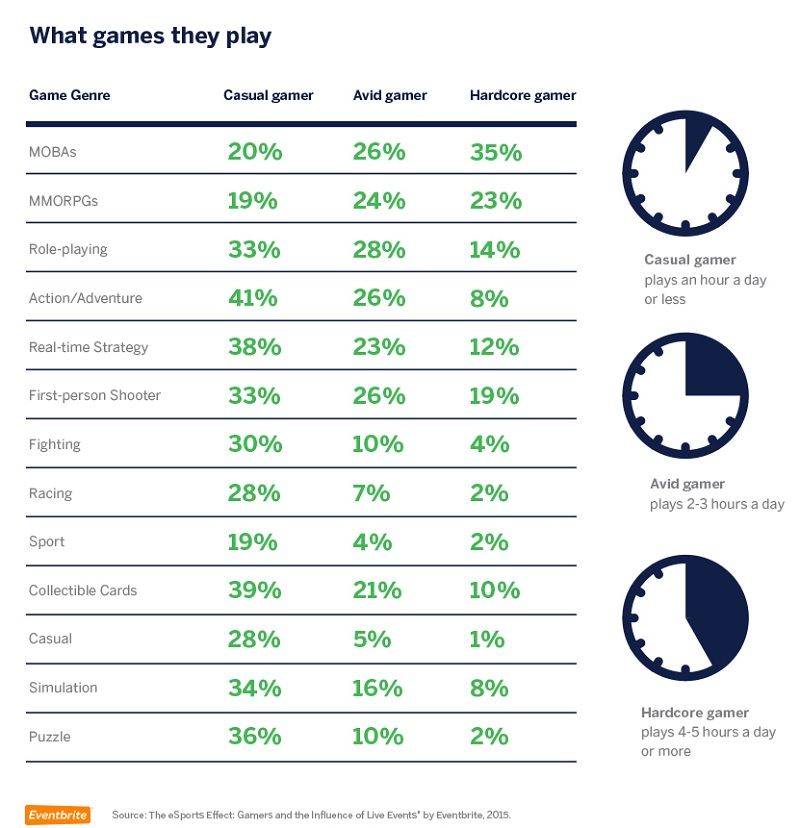
Leagues currently tend to stick with the same cities, what did you learn about fans and travel preferences?
Again, the demand for eSports events is high, and people are willing to travel to attend. Thirty-nine percent said they are willing to travel to another country or continent to attend a live eSports events, and nearly half (48 percent) are willing to travel to another state or province. Additionally, 40 percent of respondents said they would like to see events outside of major cities, so there is value in exploring new locations for existing eSports events as well as for new events.
How important is access to pros at these events for fans?
More than half (52 percent) of all respondents said meeting pro players was a reason they attend. Additionally, of the feedback attendees had for eSports event organizers, 35 percent said they want ticketed access to pro-player teams meet and greets. While not everyone attends to make a direct connection with players, seeing the pros play live is a major draw of eSports events.
What opportunities do you see for mini-festivals and multi-game events for major eSports outings?
While the focus of our study was to understand why gamers attend eSports events specifically, we did ask participants what other gaming events they go to and how often. Thirty percent said they attend three or more events in a given year and 10 percent attend five or more. When asked what types of gaming events they like to attend, 48 percent of gamers said they attend festivals. Seventy-two percent also said they attend fan conventions where often there are multiple games being played or showcased at one time. This crossover in consumer interests presents a great opportunity for other types of events to continue to evolve.
